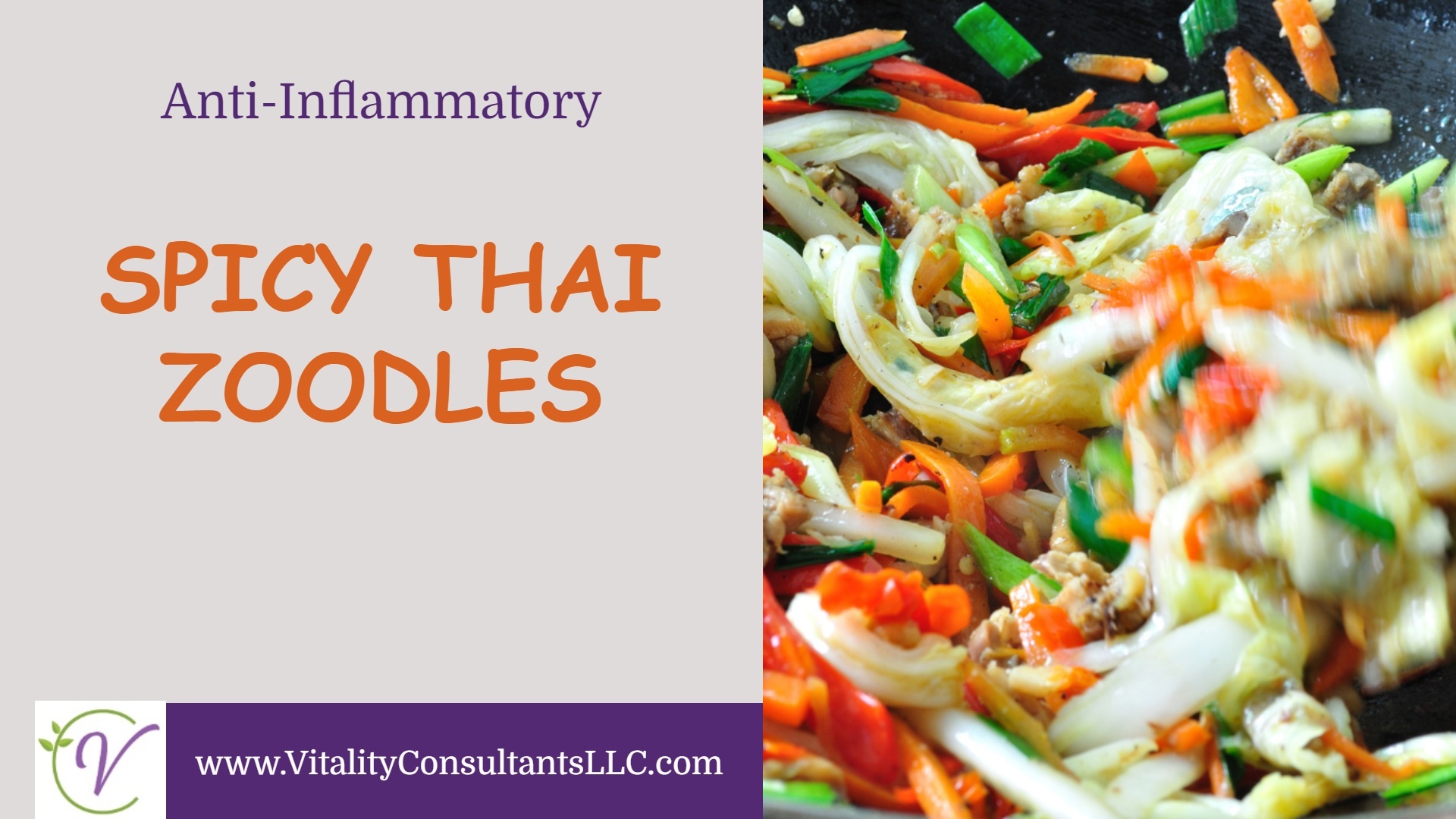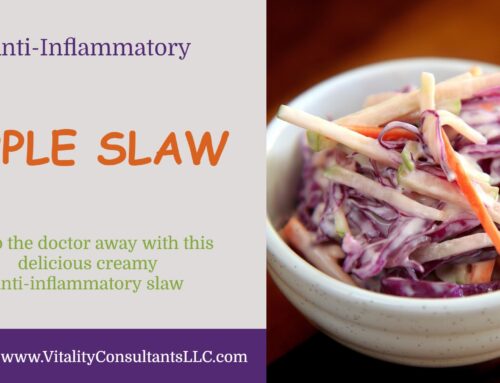What fruit fills you up and discourages overeating? Zucchini! How can this happen? While often thought of as a vegetable, zucchini is actually a low-starch fruit (meaning it is low in carbohydrates and high in fiber). Dietary fiber increases food volume without increasing caloric content, making you feel full, which may reduce your appetite.
Health Benefits of Zucchini
 Zucchini has many health benefits. It is also low in cholesterol, sodium, and fat. It helps maintain a balance of carbohydrates – a requirement for ideal heart health. Its high fiber content has been associated with significantly lower risks of developing stroke, high blood pressure and heart disease. The fiber in this fruit may also increase insulin sensitivity and stabilize blood sugar levels, possibly reducing your risk of type 2 diabetes.
Zucchini has many health benefits. It is also low in cholesterol, sodium, and fat. It helps maintain a balance of carbohydrates – a requirement for ideal heart health. Its high fiber content has been associated with significantly lower risks of developing stroke, high blood pressure and heart disease. The fiber in this fruit may also increase insulin sensitivity and stabilize blood sugar levels, possibly reducing your risk of type 2 diabetes.
Zucchini is rich in several vitamins, minerals, and other valuable plant compounds. Specifically, its abundant vitamin A content may support your vision and immune system. But be careful how you prepare zucchini as raw zucchini offers a similar nutrition profile as cooked zucchini, but with less vitamin A and more vitamin C, a nutrient that tends to be reduced by cooking.
Zucchini is also rich in antioxidants, which help protect your body from damage. These antioxidants may benefit your eyes, skin and heart; they also offer some protection against certain types of cancer. The highest levels of antioxidants are found in the fruit’s skin.
Because of the water and fiber found in zucchini, this fruit promotes healthy digestion, reducing your risk of constipation and symptoms of various gut disorders.
Preparing Zucchini
Try to incorporate it into your meals in some of these ways:
- Add it raw to salads
- Stuff with healthy protein or vegetables, then bake it
- For a mild stir-fry, sauté it
- Boil it, then blend it into soups
- Serve it as a side, grilled or sautéed with your favorite spice blends
- Spiralize it into “zoodles” for spaghetti and meat sauce, or slice it to replace lasagna sheets
- Bake it into approved bread, pancakes or muffins
In some cultures, the zucchini flower is considered a delicacy. You can sprinkle it raw on salads, soups and stews.
Storing Zucchini
Store unwashed zucchini on your counter for about two weeks. Or store in a perforated or open plastic bag for up to a week in the refrigerator. You can also freeze zucchini for later use. There are a couple of ways to prepare the zucchini for the freezer.
- Shred unpeeled zucchini, drain it in a colander and then squeeze it gently to remove excess moisture. Place it in sealed freezer bags and freeze flat so the bags can stack in the freezer. Shredding is a great way to freeze if you will be making a casserole, meatballs or fritters.
- You can also wash the fruit, dry it thoroughly, cut it into one-inch cubes, and freeze it in freezer bags. Either way, frozen zucchini lasts up to 3 months.
 Growing Zucchini
Growing Zucchini
Have you ever thought about growing your own zucchini? Here are a few facts if you ever get the itch:
- Each fruit can grow to more than 3.2 feet in length but is usually picked measuring 6 – 8 inches, when still immature. If you leave the fruit on the vine too long, the seeds and rind harden, making it inedible.
- Read more at Gardening Know How: Zucchini Squash Harvesting: When Is Zucchini Ready to Pick https://www.gardeningknowhow.com/edible/vegetables/zucchini/zucchini-squash-harvesting.htm
The goal of Vitality Consultants is, and always has been, to work with our clients to restore the body to a state of vibrant health. When something harmful or irritating affects a part of our body, there is a biological response to try to remove it. We suggest an anti-inflammatory diet plan.
Try this delicious recipe as a side dish or an entree to get you started on the path to good health!

Spicy Thai Zoodles
Ingredients
- 6 cups spiralized zucchini dried (see Pro Tip below)
- Salt
- Olive oil cooking spray
- 2 Tbsp olive oil
- 16 oz cabbage chopped
- 2 carrots peeled and shredded
- 2 eggs beaten
- ½ tsp red pepper flakes or to taste
- ⅓ cup Bragg Liquid Aminos coconut aminos or tamari soy sauce
- 3 Tbsp coconut palm sugar
- 1 -2 Tbsp sriracha sauce or to taste
- 3 cloves garlic minced
- ½ inch ginger peeled and minced
- ¼ cup cilantro chopped
- 4 green onions chopped
Instructions
- While zucchini is drying, spray a skillet with olive oil spray, add beaten eggs and red pepper flakes and stir to scramble over medium heat. Remove the eggs from the skillet and set aside.
- Add olive oil to the same skillet and return to stove. Add carrots, cabbage and garlic. Saute over medium high heat for 5 minutes or until vegetables are still crunchy and a bit under-cooked.
- In a medium bowl combine sugar, Bragg Liquid Aminos, sriracha sauce and ginger. Whisk until well combined. Pour mixture over the vegetables in the skillet.
- Add the dried zoodles to the skillet and toss gently to coat. Saute for 2-3 minutes, then add eggs, green onions and cilantro tothe skillet. Toss to combine all ingredients.
Notes
- To remove moisture from zucchini noodles, lay the zoodles on a couple of layers of paper towels, sprinkle with salt, then cover with another layer of paper towels. Let sit for 10 minutes to remove extra water from the zoodles. Before cooking press the paper towels against the zucchini to absorb any extra moisture. You can even roll the paper towels a bit to get the most water out as possible.
- Add any additional spiralized or shredded vegetables that you enjoy. Broccoli or cauliflower florets work well too.
- Want to make this into a complete meal? Add chicken, shrimp or steak.
If you’re interested in an anti-inflammatory lifestyle and more tips like this one, check out The Official Anti-Inflammatory Diet Masterclass. Or email us at info@vitalityconsultantsllc.com for more details.
Want free anti-inflammatory recipes, downloadable resources and efficiency tips and tricks from a professional chef? Of course, you do! Click here for the secret sauce!







